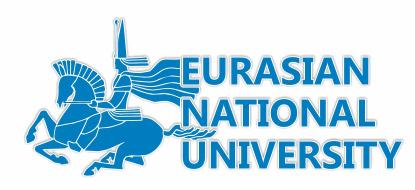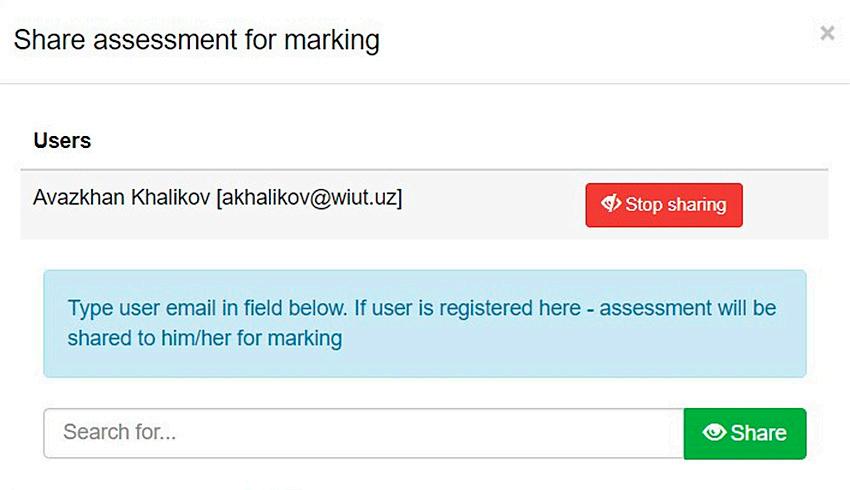
6 minute read
15 February 2020 Brussels, Belgium
ISSN 2506-8040
Advertisement

In cooperation with our members:

The greatest invention in the world is the mind of a child.
Thomas Edison


The idea of ecological attitude is becoming widespread in the modern social discourse. We usually understand ecology as the state of the natural biological environment. But this is a narrow understanding.
More and more often in literature, we meet such expressions as: • ecology of thinking • ecology of worldview • ecology of relationship • ecology of culture • ecology of digital well-being • etc.
Preserving the spiritual, cultural, moral environment of a person is no less serious than preserving the biological environment. Dmitry Sergeyevich Likhachev believed that they were closely interrelated.
In the 1970s, scientists began to apply the concept of ecology in human development. In the 1980s, they began to seriously talk about the ecology of education. Humans have a great potential that they can realise only in the historically established physical ecology.
In contrast to learning, the transfer of knowledge, values and traditions, ecological education is aimed at student’s personal growth. Thus, education is a complex dynamic ecosystem, flexible, depending on the society and material context.
An important part of the educational ecosystem is ecological teaching. Modern Education & Research Institute devotes a significant part of its activities to studying efficient methods of teaching and learning. Education can easily become toxic. It is enough to neglect at least one component of the ecosystem, for example, to stop satisfying personal needs and requirements of educators. And here one can talk even about basic needs, such as safety, clean air in the classroom, amount of space sufficient for the creative process and recreation.
In this issue of The Scientific Journal of the Modern Education & Research Institute, we continue publishing results of the scientific studies done by professors – members of MERI dedicated to effective educational models and roles of a teacher in a modern university.
Ekaterina Tsaranok Director Modern Education & Research Institute

. onference «odernization of the teacher’s profess ion: approaches, best practices, challenges» 27 November 2019
1. Baimanova Lazzat, Liza Naviy INDECOMPOSABILITY OF LANGUAGE STRUCTURES AS AN OBJECT OF RESEARCH IN RUSSIAN AND FOREIGN LINGUISTICS Kokshetau State University named after Shokan Ualikhanov, Kokshetau................................................8
2. I vanov Anton, Kondratiev I.V. Assessment of the management criteria of socio -economic processes Central Kazakhstan Academy, Karaganda..................................................................................................12
3. Kalandarishvili Maia THE LEVEL OF LEARNING MOTIVATION OF DISABLED CHILDREN IN GEORGIA Saint Andrew the First-Called Georgian University of patriarchate of Georgia, Tbilisi.................... 16
4. Kobalia Ketevan Personality profile of the teacher of physical education and sport Georgian State Teaching University of Physical Education and Sport, Tbilisi.......................................19
5. M ilevic Inga ON NON-EXISTENT OF AUDIOVISUAL TRANSLATION STUDIES IN LATVIA (ACCORDING TO MATERIAL OF SCIENTIFIC PAPER COLLECTION) Alberta College, Riga......................................................................................................................................23
6. S hpirko Mikhail DIGITALIZATION OF MARKING PROCESS USING MARK ONLINE Westminster International University in Tashkent, Tashkent..................................................................27
7. Yuldasheva Shahlo, Gulara Yusupova, Durdona Kabulova PROFESSIONAL COMPETENCE OF PRE-SERVICE TEACHERS AND THE IMPORTANCE OF THE UZBEK LANGUAGE Nukus State Pedagogical Institute named after Ajiniyaz, Nukus.............................................................32
8. Yuldasheva Shahlo, Muhabbat Hudayarova, Shakhista Buranova, Gulara Yusupova, Durdona Kabulova TEACHING THE UZBEK LITERATURE IN THE KARAKALPAK HIGHER EDUCATIONAL ESTABLISHMENTS Nukus State Pedagogical Institute named after Ajiniyaz, Nukus.............................................................37
9. Zhumagulova N.S., Akhrieva L.A., Zhumagulova E.V. ON THE ISSUE OF PROFESSIONAL COMPETENCE OF A UNIVERSITY TEACHER AND ITS ASSESSMENT A. Myrzakhmetov Kokshetau University, Sh. Ualikhanov Kokshetau State University, Kokshetau............................................................................43
ikhail Shpirko (mshpirko@wiut.uz)


Westminster nternational niversity in ashkent, Tashkent, Uzbekistan
bstract

I remember the days when teachers in Business Information Systems department of Westminster International University in Tashkent had been marking with using Microsoft Excel spreadsheet. Teachers set up marking schema in spreadsheet in the way: when certain mark is allocated, the feedback will be set automatically. The solution was quite smart and saved lot of time by refusing manual enter or writing feedback on the paper. However, the drawback was that not everyone is able to advance setup in Excel. Therefore, my initial goal was to make this process more flexible for teachers in order to save time during. The creation of the web platform https://markonline.net allowed not only to achieve initial goal, but also to go much further by providing a tool for collaborative, consistent and properly aligned marking. Current platform is widely used by academic staff members of Westminster International University in Tashkent. This article shares the details of platform development storyline and its main features overview. Keywords: online tool, efficient marking, collaborative marking, marking.
I was a fresh graduate of Business Information Systems (further BIS) course when I have join Westminster International University in Tashkent as academic staff member. I had passion of software development at that time: coding and applications development were the subject which I taught at the university, have had as a hobby and practiced on second job. I spent all my free time on trying to develop small applications that could bring benefit to me by automation of routine as well as making processed more efficient. There was an idea to create an application that makes the process of marking efficient by allowing teachers to define marking schema with feedback and mark students electronically. I decided to try out this idea and as a result developed the application that currently helps to achieve the defined goal. This application evolved from just being a software where teachers could mark students’ assessments to the collaborative platform that supports alignment in teaching and facilitates students’ learning.
I started with chronological order of how teachers perform marking which is based on my own practice and observation at the university. First, the marking schema with assessment criteria and rubrics are defined for the assessment. Teachers can create an assessment, set it up as individual or group work assignment and define number of students in a group. Assessment criteria should be defined further whereas each criterion can include dedicated rubrics. Weighing for criteria and rubrics is percentage-based and specified within range 0 to 100. Upon development of this part I identified the following use-case. Taking into consideration that each teacher may have multiple assessments for the subject yearly, soon user might find difficulties in navigation through created assessments. Therefore, I decided to add categorization for the assessments. Inspired by Google Drive [2] and Windows File Explorer [4] software,
additional feature was implemented to create folders and allocate assessments in a way suitable for them. I noticed that teachers follow the pattern for categorization: create folder for each academic year, then folder for each subject and then create assessment. Additionally, it was found that assessments for the same module might be quite similar so that there is no need to create a marking schema from scratch. Consequently, the feature to duplicate any existing assessment was implemented.
Figure 1.

ssessment design page – teacher can define assessment criteria and rubrics
Having the assessment defined, teachers move to marking process. Taking into the consideration that each subject may have a team of teachers that delivers it, I was thinking how to create an opportunity for collaborative marking using my software. I came up with option to share marking schema with other users of the software, all needed it to enter the email of person with whom you would like to share assessment for marking. This makes the process of marking transparent from managerial perspective as teachers may track the progress of their colleagues live.


